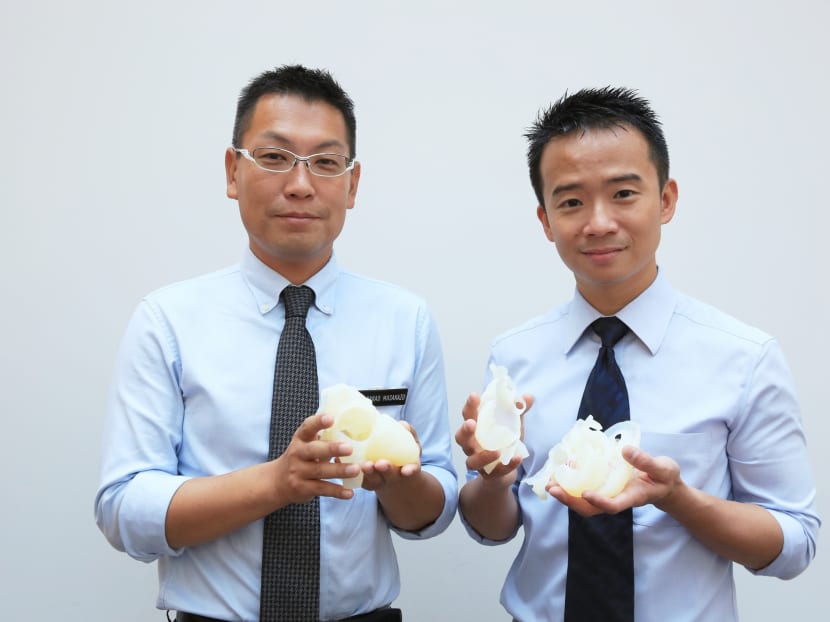3D heart models help KKH doctors with complex cases
SINGAPORE — Until recently, doctors at KK Women’s and Children’s Hospital (KKH) were using 2D images to help them get a clearer picture of complex congenital heart problems in children before they perform operations. Now, they have joined the ranks of doctors in the United States and the United Kingdom in using 3D printed models of their patients’ hearts, to improve diagnosis and planning for surgeries.

(Left to Right) Dr Nakao Masakazu, Consultant, Cardiothoracic Surgery Service, KKH and Dr Chen Ching Kit, Consultant, Cardiology Service, KKH, posing for a photo while holding the 3D Printed Heart Models. Photo: Koh Mui Fong/TODAY
SINGAPORE — Until recently, doctors at KK Women’s and Children’s Hospital (KKH) were using 2D images to help them get a clearer picture of complex congenital heart problems in children before they perform operations. Now, they have joined the ranks of doctors in the United States and the United Kingdom in using 3D printed models of their patients’ hearts, to improve diagnosis and planning for surgeries.
Such models, which cost about S$2,000 to S$3,000 to produce, also serve as a teaching tool for young doctors, the hospital said.
An MRI scan is first done on the heart, and using the image, the 3D model is then printed out, which can held in the hand. Right now, there are eight 3D models, each depicting a different congenital heart disease from real-life patients.
Dr Chen Ching Kit, a consultant with the cardiology service at KKH, said at a media briefing on Tuesday (Sept 6): “A lot of times, when patients have congenital heart disease... they have varied conditions that come in combinations, so depending on the complexity, normal imaging may not be able to give us the best information.”
It could be tricky using 2D images, he said, because the consultant would have to visualise the condition of the heart, then communicate it to the surgeon. It could turn out to be right, or wrong.
“But when it comes to very intricate and complex combination of heart problems, 3D printing will give us a very good visual or spatial orientation of what’s going on inside the heart,” Dr Chen said.
“For example, when I print out this (3D) heart, I’m able to cut it up into different pieces, it will enable me to look into the heart to see where the holes are, where the blood vessels are coming from, and what are the various combinations of other problems I might encounter in the heart.”
For children who have very tiny hearts, it can get more complicated, so the enlarged model from 3D printing also helps doctors to have a clearer view, and to know what to expect during surgery.
Dr Nakao Masakazu, a consultant with the cardiothoracic surgery service at KKH, said: “There are many challenges operating on tiny hearts and good pre-surgical planning work is critical to enhance success and to achieve optimal patient outcomes.”
He added that this model would not be used for all 200 congenital heart surgeries that KKH’s Cardiac Centre performs in a year, but only for the 1 per cent of cases that are classified as complex.
In the past year, the centre has done one operation on a nine-year-old, using the 3D model to help doctors plan. A second operation on an infant using this method is expected next.
It takes about an hour to print each 3D heart model, but KKH is considering setting up an in-house printing facility to cut down the time and cost, Dr Masakazu said. At this point, there are no plans to pass the costs on to patients.






